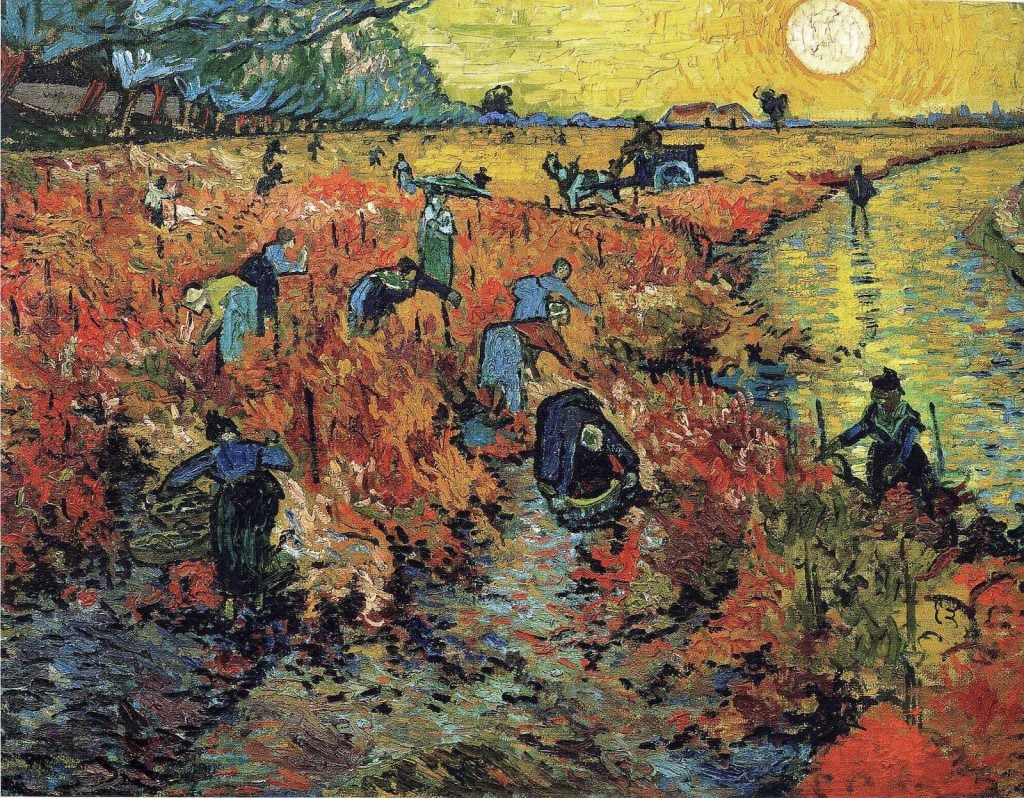Art World
Art Bites: The Only Known Painting Van Gogh Sold During His Lifetime
The work went on view two years after it was painted, and now resides in Moscow.

The work went on view two years after it was painted, and now resides in Moscow.

by
Brian Boucher

Vincent van Gogh is the quintessential example of the tortured artist who suffered penury during his lifetime, only to become a beloved figure and a market titan after his death. The Dutchman died by suicide at age 37 in 1890; a painting owned by Microsoft co-founder Paul Allen fetched $117 million at Christie’s New York in 2022.
The popular lore is that Van Gogh sold only one painting in his lifetime. There’s some debate about this, and it depends partly on how you define “sell,” as the Van Gogh Museum points out, since he did trade works with other artists, and an art dealer uncle commissioned some paintings in a charitable effort to help his nephew.
But what we do know is that there is but one known painting that he sold after a public exhibition, and to someone he wasn’t related to.
The Red Vineyards Near Arles (1888) depicts a landscape near Montmajour Abbey during the grape harvest. The evening sun, hanging low over the horizon, turns much of the landscape a fiery red as workers labor in the fields. On the occasion of its blockbuster 1984 show “Van Gogh in Arles,” the Metropolitan Museum of Art in New York pointed out that, “His move from Paris to the Midi gave rise to bold experimentation in the use of color and to explorations of style and subject matter,” resulting in “a turning point in the course of nineteenth-century Western art.”
The canvas made its debut appearance in 1890 at an annual exhibition staged by the Belgian artist group Les XX (The 20). Belgian painter Anna Boch, a member of the group, bought the canvas; different sources indicate different prices, either 350 or 400 francs. Artist Eugène Boch, whom Van Gogh painted that same year, was Anna’s brother; Van Gogh painted his portrait in the same year as the Red Vineyards.
In a letter Van Gogh wrote to his art dealer brother Theo, now in the collection of Amsterdam’s Van Gogh Museum, he said that Boch paid the sticker price, when she should have gotten a “friend’s price.”
The painting later made its way to a Paris art gallery, where Russian collector Ivan Morozov purchased it. Nationalized during the Bolshevik Revolution, the painting went to its current owner, the Pushkin State Museum of Fine Arts.
There is evidence for one other work that sold before his tragic death, but its identity and whereabouts are unknown. Per the Baltimore Sun, art historian and Van Gogh expert Marc Edo Tralbaut has published a letter from Theo van Gogh to London dealers Sulley & Lori, mentioning a self-portrait by the artist that they had bought. But it’s unknown whether this was a painting or a drawing.